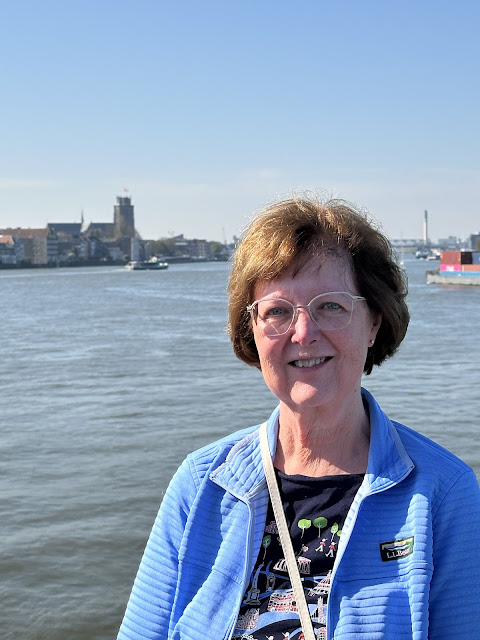 |
| From the Beverly Citizen newspaper 27 December 1890 |
On a recent snowy day my 3rd cousin, on my maternal side, a Hitchings descendant like me, sent me this lovely news clipping from the Beverly Citizen. It shows our common ancestor, Abijah Franklin Hitchings (1841 - 1910), and my great grandfather, Arthur Treadwell Hitching's wedding to my great grandmother Florence Etta Hoogerzeil on 25 December 1890 at 8 Bentley Street in Beverly, Massachusetts. They were married on Christmas, which was very common in New England at the time. Thanksgiving was also a very popular time for weddings in New England. If the family was already gathered together, then it was a perfect time for a wedding. Early Puritan settlers eschewed Christmas as a holiday in New England, but perhaps they were side stepping religion for fun when they held weddings on or around Christmas Day?
It made me think "What other ancestors were married on Christmas Day?". This is what I had in my files:
Phoebe Munroe (my 4th great aunt) and William Cross, 25 December 1828 in Danvers, Massachusetts.
Elizabeth Sparks and Jacob Perkins (my 8th great grandparents), 25 December 1634 in Ipswich, Massachusetts. I descend from two of their three children, Elizabeth (who married David Burnham on my wedding day 2 July in 1711) and Jacob Perkins (who removed to Wells, Maine and married Anna Littlefield).
Close to Christmas -
21 December
Abijah Hitchings and Mary Cloutman, my 4th great grandparents, were married on 21 December 1795 in Salem, Massachusetts.
Phebe Lilley and Noah Eaton (my 6th great grandparents), were married on 21 December 1726 in Woburn, Massachusetts.
Hannah Munroe (my 7th great aunt) and Joseph Pierce, were married on 21 December 1692 in Watertown or Cambridge, Massachusetts.
22 December
Mary Barber and Benjamin Tarr (my first cousin 7 generations removed), were married on 22 December 1748 in Gloucester, Massachusetts. Our common ancestor was James Wallis (about 1668 - 1744) who was born in Maine and died in Gloucester, Massachusetts.
Hannah Dennison and John Wallis (another first cousin 7 generations removed), were married on 22 December 1782 in Gloucester. They were first cousins to each other. Was this a double wedding?
23 December
Sally Flint (my fifth great aunt) and Levi Nichols were married on 23 December 1778 in North Reading, Massachusetts.
Sally Flint (my fourth great aunt) and Nathaniel Upton, were married on 23 December 1802 probably in North Reading.
24 December - Christmas Eve
Polly Bray and Asa Burnham, my 5th great grandparents, were married on 24 December 1801 in Ipswich, Massachusetts.
Emily Burnham (my 5th great aunt) and John Rollins, were married on 24 December 1836 in Essex, Massachusetts.
26 December (The day after Christmas)
Elizabeth Peach and Harvey Allen (my 3rd great uncle), were married on 26 December 1887 in Beverly, Massachusetts.
Susanna Dutch (2nd cousin ten generations removed) and Benjamin Knowlton were married on 26 December 1705 in Beverly, Massachusetts.
New Years Day Weddings:
Tabitha Damon and John Townsend (my 7th great uncle) were married on 1 January 1722 in Reading (now the part that is Wakefield), Massachusetts.
Sarah Andrews and Charles Treadwell (my 8th great uncle) were married on 1 January 1723 in Hampton Falls, New Hampshire.
Hannah Flint (my 5th great aunt) and William Whittredge were married on 1 January 1795 probably in North Reading, Massachusetts.
Thanksgiving weddings (just a few mentioned here, but the last week or ten days in November was extremely popular among my ancestors for weddings):
My grandparents, Bertha Louise Roberts and Donald Munroe Wilkinson 26 November 1926 at 7 Dearborn Avenue in Beverly, Massachusetts. This was Bertha's home, and where my Dad grew up, and where I grew up, too! I know they were married on Thanksgiving from an audio tape made by Bertha telling the story of her life.
My 2nd great grandparents, Robert Wilson Wilkinson and Phebe Cross Munroe were married on 24 November 1853 in Danvers, Massachusetts. This date was confirmed to be Thanksgiving from family tradition.
My 4th great grandparents Romanus Emerson and Jemima Burnham were married on 22 November 1810 in Milford, New Hampshire. I had to search online for the date of Thanksgiving in 1810, and this was the result, but I'm not sure that Thanksgiving had a set date this early.
Mark Burnham (first cousin 7 generations removed) and Hannah Goodhue were married on Thanksgiving day 26 November 1767 in Ipswich, Massachusetts.
Sarah Rue and John Beckett (my 6th great grandfather, I decend from his first wife, Rebecca Beadle) were married on Thanksgiving Day 25 November 1762 in Salem, Massachusetts (if Thanksgiving was celebrated on the fourth Thursday in November back then). Sarah Phipps married my 6th great uncle George Munroe on that same day in Lexington, Massachusetts.
If Thanksgiving were held on 24 November 1763 in Ipswich, Massachusetts, then my 5th great grandparents Isaac Allen and Abigail Burnham also had a Thanksgiving wedding date.
I'd have to calculate the date of Thanksgiving for each year in the past, which is a floating holiday, and would become a truly huge proposal! But it is a good future project. Thanksgiving was not set as a national holiday until Abraham Lincoln proclaimed it in 1863. He was persuaded to make it a national holiday by New Hampshire resident Sarah Josepha Hale, because of her fond memories of celebrating Thanksgiving as a child in New England. It was not until 1941 that FDR set the holiday as the fourth Thursday in November, which was previously a tradition in New England that was loosely followed.
 |
| 1915 Salem Gazette |
-----------------------
To cite/link to this blog post: Heather Wilkinson Rojo, "A Christmas Wedding in 1890", Nutfield Genealogy, posted 23 December 2025, ( https://nutfieldgenealogy.blogspot.com/2025/12/a-christmas-wedding-in-1890.html: accessed [access date]).














































.jpg)